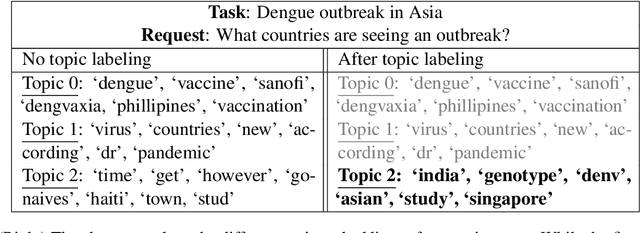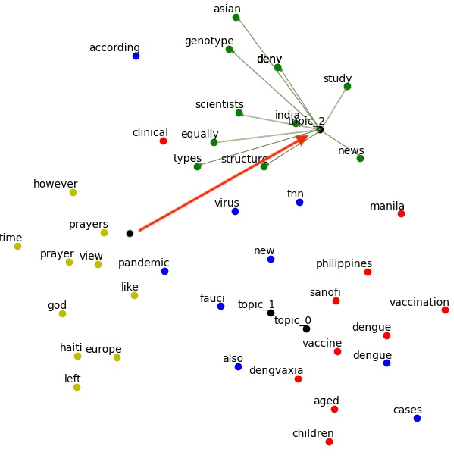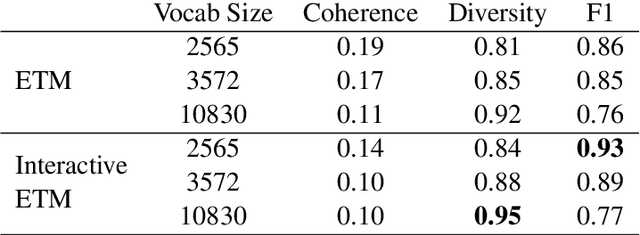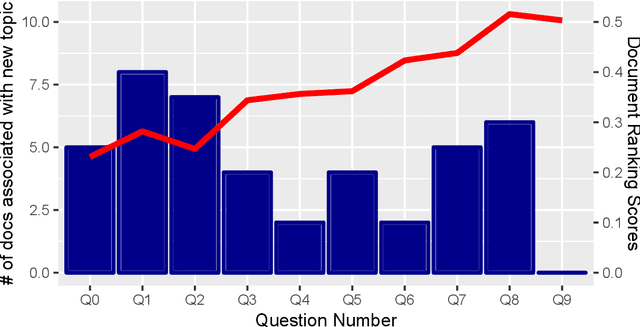Kyle Seelman
Labeled Interactive Topic Models
Nov 15, 2023



Abstract:Topic models help users understand large document collections; however, topic models do not always find the ``right'' topics. While classical probabilistic and anchor-based topic models have interactive variants to guide models toward better topics, such interactions are not available for neural topic models such as the embedded topic model (\abr{etm}). We correct this lacuna by adding an intuitive interaction to neural topic models: users can label a topic with a word, and topics are updated so that the topic words are close to the label. This allows a user to refine topics based on their information need. While, interactivity is intuitive for \abr{etm}, we extend this framework to work with other neural topic models as well. We develop an interactive interface which allows users to interact and relabel topic models as they see fit. We evaluate our method through a human study, where users can relabel topics to find relevant documents. Using our method, user labeling improves document rank scores, helping to find more relevant documents to a given query when compared to no user labeling.
What's Different between Visual Question Answering for Machine "Understanding" Versus for Accessibility?
Oct 26, 2022Abstract:In visual question answering (VQA), a machine must answer a question given an associated image. Recently, accessibility researchers have explored whether VQA can be deployed in a real-world setting where users with visual impairments learn about their environment by capturing their visual surroundings and asking questions. However, most of the existing benchmarking datasets for VQA focus on machine "understanding" and it remains unclear how progress on those datasets corresponds to improvements in this real-world use case. We aim to answer this question by evaluating discrepancies between machine "understanding" datasets (VQA-v2) and accessibility datasets (VizWiz) by evaluating a variety of VQA models. Based on our findings, we discuss opportunities and challenges in VQA for accessibility and suggest directions for future work.
 Add to Chrome
Add to Chrome Add to Firefox
Add to Firefox Add to Edge
Add to Edge